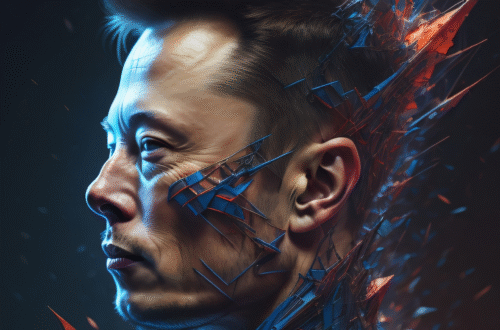
Elon Musk is a name that resonates across industries and continents. As the CEO of Tesla, SpaceX, and X (formerly Twitter), Musk has been a central figure in shaping the future of electric vehicles, space exploration, artificial intelligence, and digital communication. Known for his bold visions and controversial statements, Musk has cultivated a massive global following. It’s not unusual for him to initiate campaigns or petitions aimed at influencing public policy, shaping business decisions, or rallying support for societal change. Recently, one such petition has gained attention, prompting many to ask: how can I sign Elon Musk’s petition?
This article is a practical guide to help you understand what Elon Musk’s petition is about, where to find it, how to sign it, and what steps to take afterward. Whether you’re an avid supporter of his initiatives or simply curious, this article will provide all the information you need to engage effectively and safely.
Elon Musk’s petitions typically focus on issues that intersect with his business ventures and ideological beliefs—ranging from promoting free speech online to opposing regulations he deems harmful to innovation. The petition in question may be advocating for technological freedom, government transparency, or reforms in artificial intelligence governance. These petitions often carry broad implications and attract significant media coverage.
Understanding the goals and demands of the petition is crucial before you sign it. Often, Musk’s petitions aim to influence lawmakers, corporate boards, or international agencies. For example, a petition may call for increased regulation on AI development for safety purposes, a delay in specific governmental actions, or public backing for a controversial merger or acquisition. Such initiatives typically gain support from tech enthusiasts, entrepreneurs, and a large online community aligned with Musk’s viewpoints. However, they can also face criticism from policymakers, analysts, and watchdog organizations who may view Musk’s influence as unchecked or self-serving.
To ensure you’re supporting something authentic and aligned with your values, it’s essential to verify where the petition is hosted. Musk often uses social media—particularly X, the platform he owns—to share official links. Other times, the petition may be posted on platforms like Change.org or embedded within blog posts or press releases from Tesla, SpaceX, or affiliated organizations. It’s important to avoid fake petitions or phishing scams, which can mimic legitimate ones but are designed to harvest personal data or mislead users.
Before you sign any petition, take a few minutes to check the source. Official URLs shared directly by Musk or his companies are usually safe. Look for secure website indicators like “https” and verified account checkmarks on social media. You can also search the petition’s title on a trusted search engine to see if it’s being covered by credible news outlets.
Signing Elon Musk’s petition is generally a straightforward process. Start by clicking the official link to the petition. This will take you to a hosting platform or a dedicated website. If the platform requires you to sign in, you’ll need to create an account or log into an existing one. This may involve providing a name, email address, and sometimes location data.
Once you’re logged in, you will usually be asked to review the petition’s text. Read through it carefully so you understand what you’re supporting. Then, fill out any required fields, such as your full name and email address. Some platforms might also ask you to write a short message of support. After reviewing everything, click the submit or sign button. You should receive a confirmation email or notification indicating that your signature has been recorded. Many platforms also offer the option to share the petition on social media, which helps it gain traction.
While online petitions are convenient, it’s important to consider safety and privacy. Be cautious about the information you provide. Only give out what is necessary, and avoid entering sensitive personal or financial data unless it’s a trusted platform. Use strong, unique passwords if you’re creating a new account.
Watch for red flags like poor website design, broken links, or unsolicited emails asking for donations or further information. These could be signs of a scam. If the petition seems questionable, verify it through other sources or simply avoid interacting with it altogether.
After signing, you might wonder what impact your action has. While a single signature may seem small, collectively, signatures can signal strong public support and sway decision-makers. A well-supported petition can influence legislation, halt or initiate major projects, and bring public attention to underreported issues.
Once you’ve signed, consider whether you want to contribute further. This might include donating to related causes, attending events, or continuing the conversation on social media. Many petitions include options to receive updates, so you can stay informed on their progress and any actions taken as a result of public support.
Participating in a petition is more than just clicking a button; it’s a small yet meaningful way to exercise your voice in a digital democracy. In today’s connected world, petitions started by high-profile figures like Elon Musk can spark global movements. Whether you support the cause or are simply interested in staying informed, knowing how to engage with petitions properly is an important skill.
If you believe in the issue that the petition addresses, don’t hesitate to sign. Just make sure you do it safely and mindfully. Digital activism is one of the most accessible forms of civic participation available today, and when used wisely, it can drive powerful change. Elon Musk’s petitions often highlight urgent and high-impact issues, and your voice can contribute to shaping the outcomes.
Ultimately, by staying informed, cautious, and engaged, you can take part in movements that reflect your values and impact the future. Whether you agree with Musk or not, participating in the conversation is what drives innovation and accountability in a rapidly evolving world.



